|
|
With apologies to the late George Carlin, we all need a place to put our stuff, right?
As photographers, we really like our stuff. We need our stuff. Nature photographers, in particular, often need to schlep this stuff as far as physically possible into the wilderness Ė deep into the forest or to the top of a mountain - to capture images of nature we dearly love.
Ever notice how all the really good stuff is usually the heavy stuff too? Hauling this stuff far from the relative safety of our homes and cars taxes our energy and bodies exponentially the further we venture afoot. The dreaded dilemma then is as follows: carry less stuff (gasp!) or carry what you want and be miserable.
When I first started photography as a hobby in the early 1990s, I tried wearing a photo vest because thatís how all the real photographers were carrying their stuff. I wanted to look, walk, and talk like a real photographer too so I donned the accepted garb, knowing I at least looked the part.
I canít remember if it was a half-mile crawl on elbows and knees through rhododendron thickets in eastern Tennessee or an eleven mile hike though a narrow, boulder-strewn canyon in southern Utah, but the vestís lack of utility quickly made an impression on me.
Shoulder-strapped photo bags, the other recognized alternative at the time, were equally impractical and unwieldy for treks into the backcountry. There were no ideal options for carrying my stuff to where I wanted to use it.
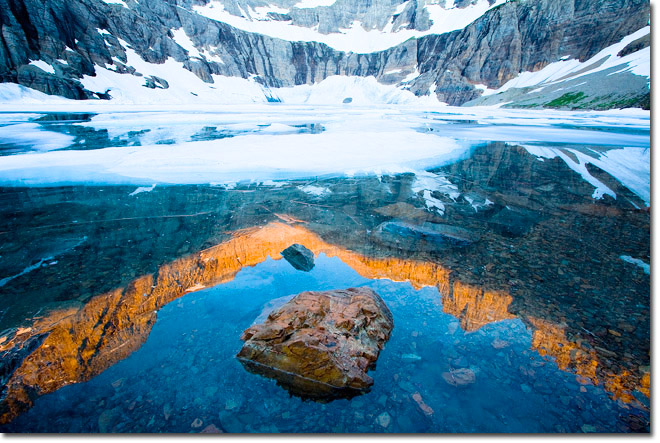
Getting your stuff to places like this was a challenge without a comfortable pack. Iceberg Lake at sunrise, Glacier National Park, Montana
Soon, photo backpacks became all the rage and they seemed like the logical answer to our dilemma. And while they did an adequate job of protecting our precious stuff, they were beasts to shoulder for any substantial amount of time. Heavy, bulky, and uncomfortable are three adjectives that come to mind when I think of the many iterations I bought, and ultimately sold, over the years. I found myself using them only when roadside shooting or for very short distances from my truck. My old hard shell Pelican case could have performed the same role just as well, with only a slight deduction in style points.
Enter the Tilopa Mountain Series photo backpack by F-Stop.
When I was first asked to try the Tilopa, I was expecting just more of the same. They claimed this pack was designed specifically for adventure photographers and it would wear and feel like a real backpack. Revolutionary. Well, I never believe baseless claims or hype without the solid backing of copper-bottomed proof, particularly corporate marketing hype.
So as I opened the newly delivered cardboard box, I did so with a healthy dose of skepticism. And now after more than three months of travel, use, and typical Bernabe abuse, I can honestly say I like this pack. No, I really like this pack. Let me explain.
I will offer only a subjective review here, based only on my own experiences. Iíll leave the technical information and specs for the website (which you can see here: Tilopa Mountain Series by F-Stop).
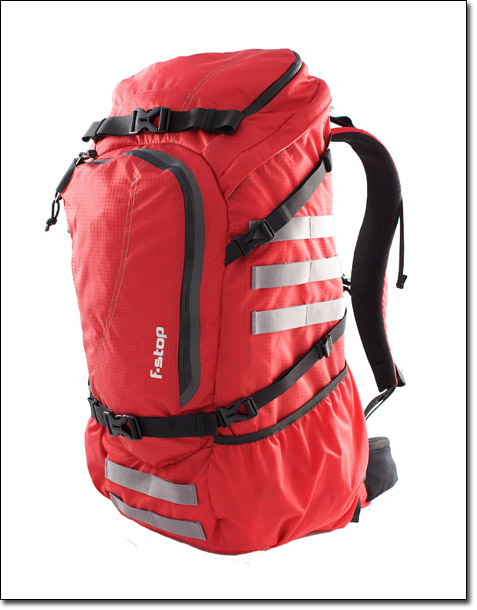
The Tilopa
My very first impression of the Tilopa was its sleek and slim design. It certainly didnít have that bulky look or shape of a photo backpack when I first lifted it out of the box.
Next, I was shocked at how light it was and I soon understood why. The pack is only a shell composed of a tough nylon fabric and exterior pockets fashioned around a lightweight and adjustable suspension system of a real backpack. The camera stuff fits into a portable, padded Internal Camera Unit (ICU) that slides inside the top of the pack.
With previous photo backpacks I have owned, it seemed as if the designers started with a conventional camera bag and at the last possible minute, bolted on a pair of shoulder straps and called it a pack. The Tilopa appears to have been engineered the other way around. A lightweight, comfortable hiking backpack with a real internal suspension system was designed first with the padded, gear-carrying ICU as an addition. Of course I am completely ignorant about the design or manufacturing of any pack or bag but intuitively, thatís how it feels to me.
All of that must translate into how it performs in the field, of course. Iím happy to report that the marketing hype is spot on. It fits and wears comfortably, just like a real backpack without sacrificing any protection of your gear. No sore shoulders or aching back after a day of hiking or scrambling over rocks and boulders.
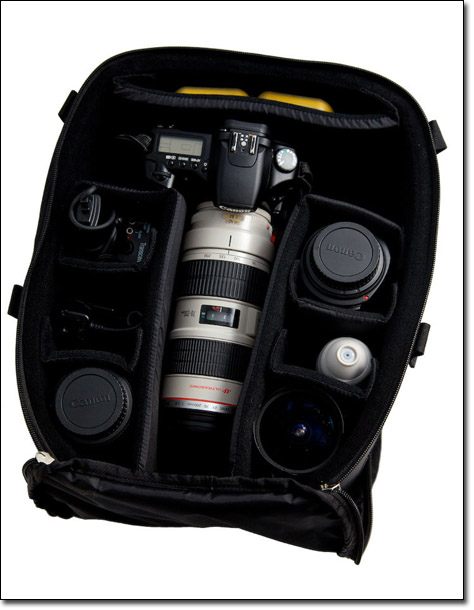
Tilopa's Internal Camera Unit (ICU)
And since the ICUs come in three different sizes, the pack is completely customizable to fit your trip. Need to only carry a camera body plus a lens or two? Use the small ICU and save the extra space in the pack for climbing or fishing gear. Need to bring your full assortment of cameras and lenses? Use the large ICU and you will still have enough room for lunch, water, a rain jacket, and more. That doesnít even include the ample exterior pockets on the lid and front of the pack as well. You can even forgo the ICU completely and the Tilopa will function as a great daypack on its own.
My Tilopa and large ICU comfortably carries my Canon 5D Mk2 with extra battery grip, 17-40mm, 24-105mm, 70-200mm, 105mm macro, and 100-400mm lenses and an SB580 flash. On top of the ICU, I load my Patagonia fanny pack with all accessories such as extra batteries, CF cards, remote cable, lens cloths, level, tools, etc. There is still enough room for a lightweight rain shell, a book, lunch, 2 Nalgene water bottles, towels, bandanas, and more. Thereís an interior pocket for either a hydration sleeve (a good idea) or a laptop (not such a good idea). As mentioned, there are exterior pockets as well.
If you travel often as I do, you will also be happy to know that the Tilopaís size meets the legal requirements for carry-on status for most major airlines. Iíve also found that it fits nicely in the overhead compartments of at least the larger jets.
With the Tilopa, you access your camera gear through the back of the pack, between the shoulder straps. Once again, this runs counter to how most of the other photo packs are designed. When you set your pack down on the ground to access your gear, the straps and back panel are facing up toward you instead of being exposed to the water, mud, sand, snow, and dirt. Oh, you photograph in those places too?
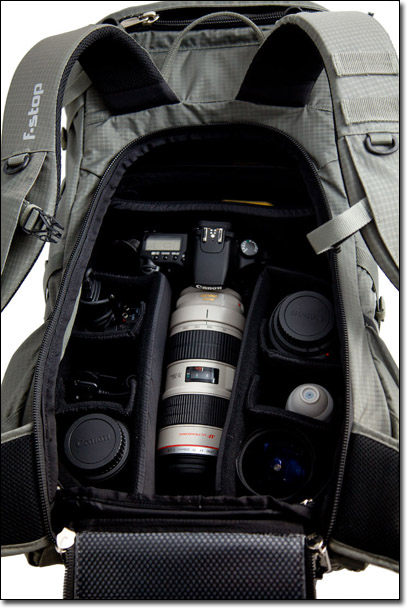
Your gear is accessed from the back of the Tilopa
Also, if I want to quickly grab something from the ICU, I donít have to unstrap the tripod from the pack, which is necessary with most of the other front-loading photo packs.
Speaking of which, my full sized Gitzo 1325 tripod with Kirk BH1 ballhead attaches snugly and securely to the back of the pack. This is easily the most secure tripod-carrying pack (photo pack or otherwise) that I have ever used.
I must admit that was not a fan of having to unzip twice Ė the outer zipper of the Tilopa and the ICU zipper Ė in order to reach my camera gear. My answer to this was to keep the ICU unzipped and the front flap tucked under and behind the ICU while it was in use. That way, I only needed to unzip the back panel of the pack only.
But after a week in North Carolinaís Outer Banks this past November with steady onshore winds and flying sand, I realized and appreciated the value that the two layers provided. That protection applies to rain and snow as well, of which this particular Tilopa has seen more than itís share already.
I still leave the ICU unzipped 90 percent of the time, just for pure convenience, but itís nice to know the added protection is there when needed given the conditions.
Thatís as close as I can come to finding anything negative about this pack. As I said, I do like it and itís easily the best photo backpack I have ever owned. My stuff has found a new home.
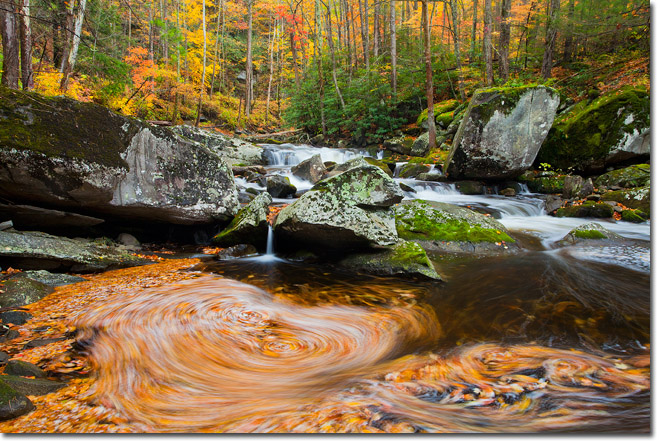
Setting your pack down on wet places such as this is no longer a problem with the Tilopa. Middle Prong of the Little River, Great Smoky Mountains National Park, Tennessee
In case you were curious, the original Tilopa was a 11th century king of a province in India who, after becoming disillusioned with wealth and power, gave up his life of royalty to seek a master of the Dharma. During this search, he encountered Nagarjuna who was clearly struggling to cross a very wide river. Despite being much smaller in size, Tilopa waded out into the rushing waters and carried Nagarjuna safely to the opposite bank.
Now a better writer than myself could possibly construct a clever metaphorical bridge between this ancient antidote and a camera bag. Iíll take a pass on that one. I can simply say, however, that this particular Tilopa carries my stuff into the backcountry with more ease and comfort than I ever thought possible with the protection my stuff deserves.
Comments on NPN photography gear review articles? Send them to the editor. NPN members may also log in and leave their comments below.
 NPN Editor-in-Chief, Richard Bernabe has been a full-time professional outdoor photographer and writer since 2003. He's had thousands of publishing credits over the past 20 years and he regularly leads photography tours and workshops across the United States as well as internationally.
NPN Editor-in-Chief, Richard Bernabe has been a full-time professional outdoor photographer and writer since 2003. He's had thousands of publishing credits over the past 20 years and he regularly leads photography tours and workshops across the United States as well as internationally.
For more information about Richard's photography, be sure to visit his personal website, Richard Bernabe Photography.